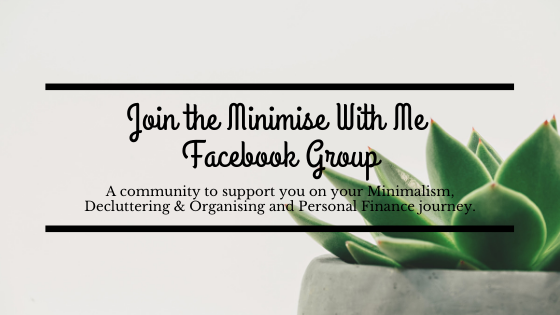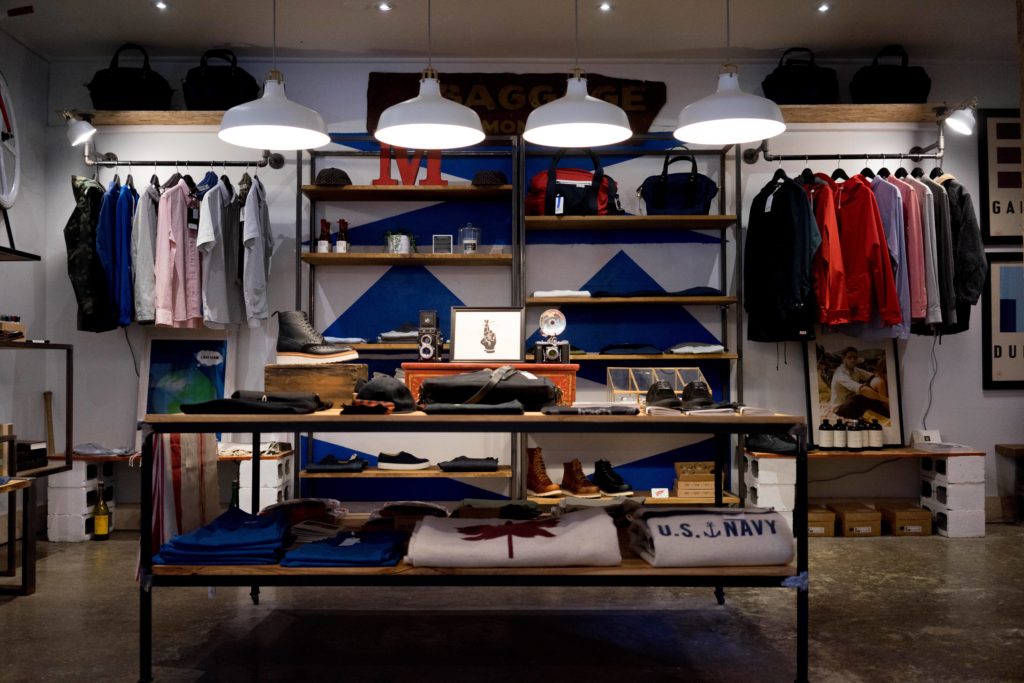Could you use some questions to ask yourself before buying anything to curb your spending ways?
After discovering minimalism a couple of years ago I have had numerous opportunities to learn how my brain ticks when it comes to consuming. In the past, I used to run to sale bins and couldn’t walk away from anything that was a two for $10 special, even when I didn’t need it.
I would go to the shop with my birthday money in hand looking for some random item of jewellery to spend my money on, waiting for the stores to tell me what I wanted or needed. I would look forward to Mondays when I got my weekly catalogues in my letterbox and would comb a whole bundle of them each week, marking in things I would like to buy. These were the days before I discovered how to spend my money with intention.
Since then, I’ve learned that I can still buy things I want and need with a little forethought and more often than not, no buyer’s remorse.
Nothing much will necessarily free you from the urge to want new things, to upgrade and replace, but there are tools and strategies to help you reroute your purchasing habits into more intentional ones, with you in control, not the marketers and stores who are experts at making you part with your hard-earned cash!
Over time I have developed some helpful questions I ask myself before buying anything, prior to handing over any cash or cards.
These are seven questions to ask yourself before making any purchases to help you spend your money with intention. These questions can be applied to any purchase for any amount, but of course, the more they cost, the more necessary they will be for your budget.
7 Helpful Questions To Ask Yourself Before Buying Anything
1. Can I afford this?
The first of the 7 questions to ask yourself before buying anything is can I afford this?
I’ve put this first as it really is the most important one. If you are broke then you shouldn’t be shopping so you can skip the other questions and exit the shop (hehe worth a shot!).
But in all seriousness, if you don’t have enough money to pay your car registration or buy everything on your grocery list, or pay your utility bills then you definitely shouldn’t be out or online shopping and spending money.
Here are some general guidelines that you can’t afford something. Answer yes or no to the following:
- you have credit card debt and don’t pay off your card in full each month.
- you are struggling to meet the minimum repayments on your credit card/s.
- you have to use BNPL to pay for it.
- you know that by spending the money you are going to leave yourself short for essential purchases like petrol or groceries.
- you save $0 saved and struggle to put even $50 into your savings account each week.
- you don’t have an Emergency Fund saved of at least $2,000.
If you answered yes to any of the above questions, it’s time to put the items down and leave the store – you have some homework to do.
When you get home, you need to seriously consider cutting up your credit cards if you have them and can’t resist the urge to use them.
2. Do I need this?
Before heading for the check-out line, ask yourself do I need this item or do I just want it? Sometimes we can convince ourselves we are buying something we need when it is really just a want.
Think about whether you really need another bottle of nail polish or a set of pajamas or you are just buying them because they were on special or caught your eye.
Picture your drawer at home, is it overflowing with pajama sets? Do you already have 50 bottles of nail polish that you barely use?
It’s okay to buy things just because we want them on occasions, we work hard and should be able to reward ourselves! There is nothing wrong with that. The key is to make sure that those purchases are intentional.
Forget the Joneses’
Are you looking at blowing $1,500 on the latest iPhone even though yours is only a year old and functions perfectly well? Or get the latest TV because it has XYZ features? This is a slippery slow and an endless cycle, with new technology coming out every single day you are never going to keep up. Forget what everyone else has and make decisions based on your needs not on how you want to be perceived by others. Let’s be honest, no one really cares what you do and don’t have in your home, and you shouldn’t either.
Related post: Minimalism at Thirty: What it Means to Me
3. Do I have something similar, can I borrow or buy it second-hand?
Before running out and buying something brand new consider your options. Do you have something at home that you could use? If you need some new containers, maybe you could repurpose some glass jars from your pantry. Or repurpose some gift boxes instead of going out and buying new containers. If you need something for a once-off project like a power tool, ask around if you can borrow one from a neighbour or family member. Check local freecycle or sale sites or your local thrift store for more affordable options. If you can’t find what you need then you can look into buying it new knowing that you are doing so intentionally.
4. Do I love it?
Before buying anything I ask myself do I love it. Is this the one? There is nothing worse than buying something similar to what you want only to realise days later there was a better one that you liked even more available.
If you are about to buy something and it’s not 100% what you were looking for but 80%, consider holding off on buying it and look around more for that close to perfect item. In time you will have a house of items you love rather than things you rushed into buying and probably won’t like for the long term.
In the words of Derek Sivers, if it isn’t a hell yes it’s is a hell no. Find something that you love the design of, ask yourself is it comfy, does it make me feel good, do I love it enough to wear it regularly? By all means, we shouldn’t become too attached to anything we have bought but we should make sure we are buying things we truly love into our homes and not just anything.
5. Does it suit my needs at this moment?
Ask yourself does this suit my needs at this moment for each purchase. Avoid buying an outfit that is a little too small with the intent to lose the weight. Buy what fits you today. If you are car shopping resist buying the fuel-guzzling SUV if you are single and could get away with driving a small fuel-efficient hatchback. If you only use your phone for text messaging and calls do you really need the latest iPhone or could you get away with a much cheaper option?
6. Will I get a lot of use out of this item?
As they say quality over quantity. Before buying an item, one of the most important questions to ask yourself is about the quality of the product. Maybe you are about to get a bargain on some $10 flats but will soon experience foot pain from the poor quality and toss them within a couple of months as they are worn out.
Maybe you’re considering buying a new shirt but you notice the buttons are a bit uneven or the lining of the shirt is already coming undone. Before parting with your hard-earned cash consider whether you should perhaps save your money and buy a more quality item.
Consider how often you will use and item. Are you going to buy a dress to wear to a wedding and never wear it again? Maybe it would be better to hire a dress instead and save yourself the money. Are you buying a pair of shoes that will only go with only outfit in your wardrobe or be out of style in a few months? Leave them behind and opt for something more classic that you can get your value out of with repeated use.
Related post: How to Build a Capsule Wardrobe: A Beginners Guide
7. If the item was full price would I still buy it?
If you would not pay full price for an item, do you really love it, and is it really the right decision to be buying it. Sometimes we are pulled into making purchase decisions by the sale price and we lose a bit of our ability to see something exclusive of the bargain that it may be.
I have found this one of the great questions to ask yourself before buying anything that really cuts to the chase of a purchase and whether I am making the right decision in buying it. Of course, buying something on sale is amazing, but just playing a momentary trick on our brains can help us spend with intention.
8. Is this an impulse decision?
Sometimes even when the above questions are all a yes, we can still be making an impulse decision which is when that after shopping high disappears and we start to feel a pang of guilt over what we just spent.
Ask yourself before handing over your card, am I making an impulse purchase, or is this an intentional spending decision? If you walked into the store without a list of what you needed, found something randomly, and are at the register you are most likely making an impulse purchase that you may regret.
Two helpful tools
Here are two tools I also use to help me make more informed purchasing decision
1. Try it on first rule
In the past one of my worst budget and clutter offences were caused by buying clothing on impulse and in a rush. I would grab a new stripey singlet that I just couldn’t resist whilst waiting in line at the register only to take it home and realise it didn’t fit. I would see the line at the change rooms and think – Um, no…. It’ll be fine and if it’s not the right fit I will take it back.
But I soon realised that if I didn’t take it back with the limited time frame most stores had for returns I was stuck with something I couldn’t wear.
Since those days I have implemented a new rule that has saved me a lot of wasted money and unwanted items. I avoid buying and item of clothing unless I have tried it on first. This doesn’t work so well with shopping on line, but if you are in store try and stick to this rule to save yourself the hassle of bringing things home that you probably aren’t going to be bothered or have the time to return.
This rule will help ensure you have a wardrobe you love rather than an overflowing one of clothes that don’t fit or make you feel great!
2. 30- Day Wish List
To resist impulse buys, make a plan for future purchases. Keep a list somewhere on your phone or in an excel document of all the things you would like or need. Don’t act on them for 30 days. For more costly purchases, set a price limit such as items over $100 and aim to stretch out that waiting period to 3 months.
In that time, think about the item and do your research.
Establish do you need it, what does it cost, what is the best price, what do the reviews say, what are my friends and families opinions of the brand etc. Then start saving for it so by the time the 30 days or 3 months roll around you will have enough money to buy it in cash! And sometimes after a week or so you will realise that you really don’t want that item anymore and save yourself some money and unwanted clutter in your home!
The great thing about this is when your birthday or Christmas rolls around, if people ask you what you would like you can suggest something on your list. It will also mean so much more to you when you finally get something as you have waited for it for the past month or more and confirmed it is something that will add value to you.
And there is no greater feeling than buying something after you have thoroughly researched it, know it is the right buy and you have paid cash for it!
Do You Want Help With Spending Your Money With More Intention?
If you want to learn how to spend your money with intention and in line with your values and take the stress and anxiety out of your money, book in for a free Q&A call to see how Minimise With Me financial coaching can help you gain clarity around your finances!
You can learn more about my financial coaching services and how I can help you achieve your financial goals here.
Do you have any questions to ask yourself before buying anything that has helped you curb unintentional spending? Share them in the comments below 🙂






